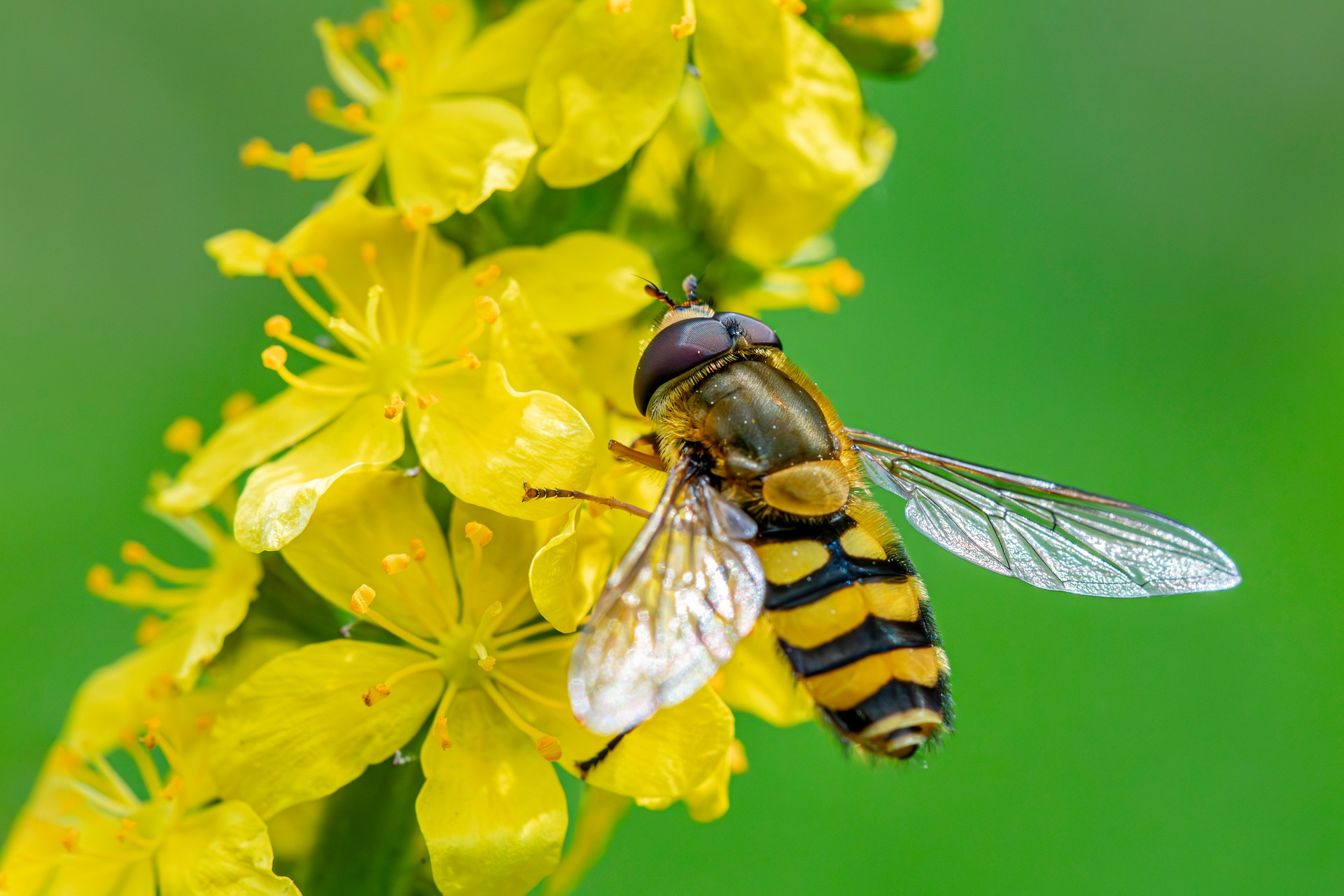Here is a detailed overview of the Black-legged Flower Fly (Syrphus vitripennis), a common and important hoverfly found throughout Europe:
🪰 Black-legged Flower Fly (Syrphus vitripennis)
🔹 Taxonomy
- Order: Diptera (True flies)
- Family: Syrphidae (Hoverflies)
- Subfamily: Syrphinae
- Genus: Syrphus
- Species: Syrphus vitripennis
- Authority: (Meigen, 1822)
🔹 Identification
- Size: ~10–12 mm in length
- Coloration:
- Bright yellow and black bands on the abdomen – typical wasp mimic
- Black legs, especially the hind femora (key feature separating it from similar Syrphus species)
- Thorax: Shiny metallic greenish-bronze
- Eyes: Large and reddish-brown, typical of hoverflies
- Wings: Transparent with a distinctive dark wing vein loop (spurious vein)
🔹 Distribution
- Widespread throughout Europe, including:
- British Isles, Scandinavia, Central and Eastern Europe
- Also found in parts of North Africa and Asia
- Prefers temperate zones but highly adaptable
🔹 Habitat
- Occurs in a wide range of habitats:
- Woodland edges
- Hedgerows
- Gardens
- Parks
- Meadows and flower-rich fields
- Adults are highly mobile and often seen visiting open flowers
🔹 Seasonal Activity
- Flight period: March to October (peaks in spring and late summer)
- Multiple generations per year in warmer regions
🔹 Behavior and Ecology
🌸 Adult Diet
- Feeds on nectar and pollen, especially from:
- Dandelions
- Daisy family (Asteraceae)
- Umbellifers (like hogweed and cow parsley)
- Brambles, buttercups, thistles
- Excellent pollinators for wild and garden plants
🐛 Larval Behavior
- Larvae are voracious aphid predators
- Help control greenfly and blackfly populations on plants and trees
- Often found on deciduous trees, nettles, roses, and crop plants
🔹 Distinguishing Features
- Black hind femurs (thighs) – unlike Syrphus ribesii (yellow legs)
- Hovering ability: Can remain still in flight, then dart quickly
- Mimics wasps to deter predators but is harmless and stingless
🔹 Similar Species
| Species | Hind Legs | Notes |
|---|---|---|
| Syrphus ribesii | All yellow | Most common look-alike |
| Syrphus torvus | Hairy eyes | Less frequent |
| Episyrphus balteatus | Narrow waist, orange abdomen | Very common, but smaller and slimmer |
🔹 Ecological Role
- Pollinator of wildflowers, fruit crops, and garden plants
- Biological pest control – larvae consume hundreds of aphids before pupation
- Indicator species for healthy, flowering habitats
🔹 Conservation
- Not threatened – very common
- Benefits from:
- Wildflower planting
- Reduced pesticide use
- Organic gardening practices
🔹 Fun Facts
- Hoverflies like Syrphus vitripennis are often misidentified as bees or wasps due to their Batesian mimicry
- Despite their fearsome look, they are completely harmless to humans
- Their name vitripennis means “glass-winged” – referring to their clear, veined wings
📸 Observation Tips
- Look for them hovering near flowers in sunny weather
- Best seen in spring and summer, especially around flowering shrubs and trees with aphid colonies
- Easy to photograph while feeding on flat-topped flowers like hogweed or daisy-like blooms
Visited 58 times, 1 visit(s) today
Views: 2589
Subscribe to the newsletter:
